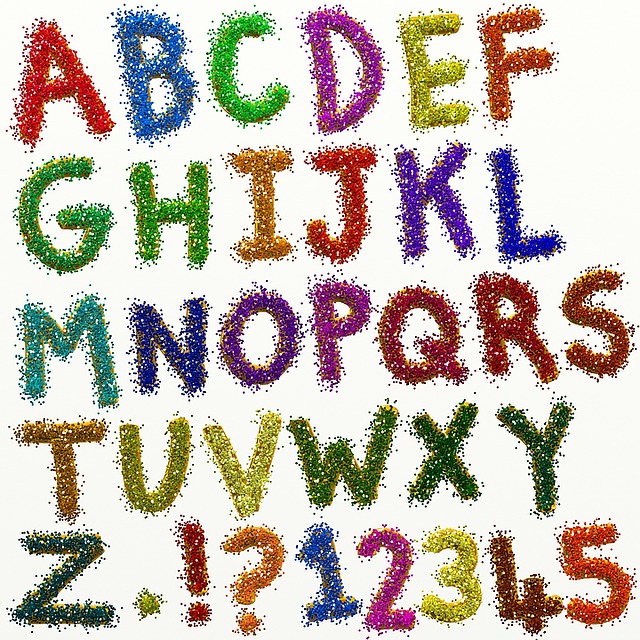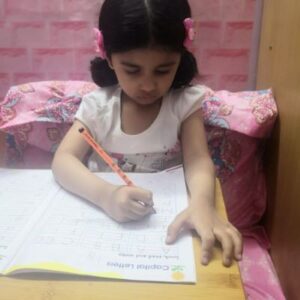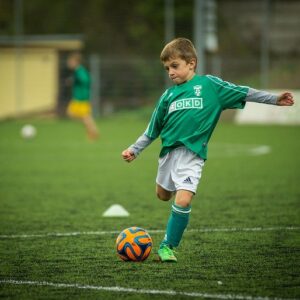Concerning the education of toddlers and young kids, there can be many questions, such as, why to teach, how to teach, what to teach and when to teach.
I have tried to address the question ‘Why to teach’ in my previous post. Click here to read Teaching Toddlers at Home: Right or Wrong?
I will address ‘what’ and ‘when’ later. In this I will only be talking about ‘How to Teach’, ‘How to make them understand/learn’, ‘How to attract their interest’.
Before discussing how to teach, these are a few points that we should understand and keep in mind:
- I know only two languages, Hindi and English. So if I am made to watch a Marathi film, no matter how interesting the movie is, I will find it boring; because I am not familiar with the language. Similarly, when the child starts going to school and he does not recognize the alphabets and numbers, he might feel pressurized and thus would try to avoid them. So we should make the child familiar with alphabets and numbers since beginning. I am not asking you to teach him everything beforehand, I only mean that he should recognize the alphabets and numbers just the way he recognizes other things.
- Kids don’t like to study, they like to play. So teach them through play and activities.
- Kids have very short attention spans. Do not expect one hour long study sessions from a 2-3 years old child.
- We develop disliking for anything that is forced upon us. Try not to force them to study (though in some cases parents need to).
- Kids like to help. Instead of teaching, ask for help.
- Kids like challenges. Instead of instructing them, ask them ‘can you do this? See, I can’.
- DO NOT teach them, pretend as if you also do not know and you are learning together.
- Do not underestimate the importance of BOOKS. We might think that we ourselves can give activities in the notebook, why to spend money on books for basics. But trust me, books make a huge difference. The colors of the books make studying attractive for kids. No matter how creative we are, we cannot match the creativity of books (if you choose the good ones).
- Do not forget to appreciate. Show happiness and excitement when the child does something right. It goes a long way.
Now let’s discuss few ideas on how we can teach them.
A short Disclaimer: I am not an expert. I am just a mother who keeps on absorbing and learning. Though I am a teacher by profession, but teaching master’s students and toddlers are entirely different. Here, I am just sharing my experiences and the things that have worked for me while teaching my young daughter. I hope these help you in some or the other way.
Make the kids familiar with alphabets and numbers
These days it is very easy, in fact easily achieved in most of the cases. There are toys through which the child can get to know the alphabets and numbers. There are play mats with alphabets written. You can paste big charts of alphabets on the walls, or you can make big and attractive Flash cards having one alphabet each and paste them around. This I think you should start as early as possible. Remember I am not talking about teaching them (please do not troll me), I am just talking about making the kids see them. The idea is that the alphabets and numbers should not seem alien to the child when he starts his education.
Few parents might question that why we should pressurize the child with studies this early. My question is: How is it a pressure? If the child sees a car and asks us what is it; we tell him it is a car and this is fine. Then if the child sees A, asks what is it and we tell him that it is A; how does that become a pressure?
Several, literally several mothers complain in parenting forums daily that their kids are not interested in studying. That’s because they don’t relate the alphabets and numbers with their daily life. You will have to incorporate the numbers and alphabets in child’s daily routine, in his plays, games and toys. How? Let’s see a few examples:
How to make them Recognize/Identify the Alphabets and Numbers
During Play time
Now comes how to make them identify the alphabets and numbers. For this, you can keep the flash cards among the toys. When you play with your child, involve the alphabets or numbers in your play. For example, ‘the car comes and hits the A. A is injured, A goes to B for help’ or ‘B for Bear is hungry, he wants to eat A for Apple’. Play with the flash cards just the way you play with the toys. That’s easy, right?
In the Park
In the park… I drew 10 boxes in the sand and wrote numbers, gave my daughter a stone and asked her to throw it in specific boxes as I asked. if I said 4, she asked which is 4. I also fooled her to write the numbers, by asking her for help… ‘oh the number has faded, can you please rewrite it for me?’
Using Laptop
My child likes typing on Laptop. This helped me a lot in making her identify the alphabets and numbers.
After my daughter had learnt to write 1-10, and oral counting beyond 10. I wanted to teach her that 1 and 1 makes 11, 1 and 2 makes 12, and so on. Laptop helped me in this. Once she was typing numbers on laptop. I asked her if she can write 11, 12 etc. She asked how, and I told her. She learnt this in just one go, she never had to ask me again.
Teaching The Correct Sequence
A mother recently complained that her child identifies the alphabets and numbers, but do not know them in the right sequence.
While giving massage to my daughter, I always counted aloud the number of strokes, even when she did not understand it much. This helped her in knowing the counting. You can incorporate numbers in other activities too, for example, when you climb the stairs… say ‘let’s see how many stairs we are climbing’ and start counting. Count his toys while playing. Count the flowers/circles on his dress. And there can be many more instances. The child will learn gradually. This way, the child also learns the basic concept of counting; he understands that the number increases in this sequence as we move ahead by one step, or add one thing.
You can also sing ABCD… during the bath time. The idea is to make the child listen to the sequence. He will learn gradually.
How to teach them Writing
Before moving on to writing of alphabets and numbers, let’s discuss the prerequisites for learning to write. First is that the child should learn to have grip on the pencil. It is not advised to make the child write at an early age. After 1.5-2 years of age, start with crayons and colors. Choose the thick colors (crayons mainly) (thick crayons are easier to grip), and just let the child scribble, for days, for weeks. Once you feel that child is scribbling successfully and is old enough to move on… you have to start with standing lines and sleeping lines. But you don’t have to teach the child. While scribbling, just pretend to play, ask him, ‘can you draw a straight line?. I can’ and draw yourself. Kids like challenges; remember?. He too will try to draw. Move step wise. Once you feel he is able to make straight lines, move on to curves. For curves, initially you might have to hold their hands and make them write, or draw dots for them to trace. You can seek the help of Google and YouTube to know the types of patterns. But it is better to make them draw patterns in books. There are books where the child has to fill the whole page with one type of pattern. If your child does that happily, very good, but usually kids find it boring. Try to find the books where the child has to join the dots to complete a picture. Children take more interest in them. I am attaching few pictures for reference.



Only when the child knows how to hold the pencil and has the required flow, move to the writing of alphabets and numbers.
First, give them chalk/marker and make them write on board. Writing bigger is easier than writing smaller.
As you move on to notebooks, first let them write without the restrictions of dimensions. Do not bind them in between the lines. Let them first understand the making of the alphabets and numbers. Introduce the concept of dimensions later.
Writing Alphabets and Numbers
Name Game
As I told that the books where the child has to write same thing 20 times on a page are boring, try something else.
My daughter did not like writing, she found it boring. So instead of asking her to write one single alphabet repeatedly, I started asking her to write her name. The thought of writing her name thrilled her and she was ready. Since the child does not know, he will ask you ‘which alphabet do I have to write’, ‘how is it written’, and then is your chance of teaching him. Tell him, and he will remember this one time more than the forced 20 times. He might forget the next day and ask you again, but it still is more effective because he will be trying to learn it more eagerly. After making her write her name for 2-3 days, I asked her if she can write her mother’s name (kids like challenges). Afterwards, I told her ‘let’s write ‘granny’ and show it to her, she will be so happy’. She wrote that too and ran to show it to her granny. So, try different names and various objects’ names.
Count and Write
Instead of asking her to write a number repeatedly, I make her count and write. I draw objects in notebook and ask her to count and write. This is less boring. And you can always use books also.
Writing Games
Once the child gets the basic idea of alphabets and numbers, you can try playing this game for the reinforcement. Write alphabets with your finger on his back, or in air, and ask him to identify the alphabet or number. As he grows up, you can also write words appropriate to his age.
Since it is a game, give him his turn and let him write for you to identify. Fail intentionally sometimes. Kids love those games in which they win.
Use Books
Make the full use of creative books that are available in the market these days. In books, there are activities that require writing of alphabets and numbers. Kids usually enjoy them. In fact, when my kid writes in these books, she does not count this as studying. She calls it activities.




Confusing Alphabets/Numbers
Children very commonly get confused with few alphabets and make their mirror images, like C, D, F etc. For this, correct every time they write it wrong (politely of course). Also, you can paste flash cards of these particular alphabets in his room. He will be (unintentionally) looking at them several times and this will help him having the correct imprints in his mind.
Remember, this all is not happening in one day. have patience and Go slow.
I just realized that the post is already very long. I know that even we parents do not like studying and so reading a very long post would be boring for you. I am still left with a few things that I want to share with you all parents, but I’ll write them in the second part of ‘How to Teach’. (Update: 2nd part has been uploaded)
One major reason of kids’ disinterest is that they do not know writing properly. Once they know how to write, they become more comfortable with studies and will stop avoiding it. This is my personal experience. In my last post, I mentioned that my baby hates writing, but actually that was because she did not know a few numbers. In last one week, she has learnt and thus she is not as reluctant as before. In fact now she enjoys the sense of achievement when she successfully finishes her work.
See you again soon.
If you found this article useful, and want to see all these ideas and many more ideas in videos form, please follow the Facebook Page to stay connected and be notified of more useful articles in future. I do these activities and more interesting activities with my daughter and post the videos on this page, so do not forget to like/follow the page.
Please connect on Instagram to have daily updates of day-to-day activities and quick tips.
Also Read:
Is it right to teach young kids: Why?
How to teach toddlers about colors, shapes, new words and new concepts






3 thoughts on “How To Teach Toddlers/ Young Kids. Part 1 (Alphabets and Numbers)”
Comments are closed.